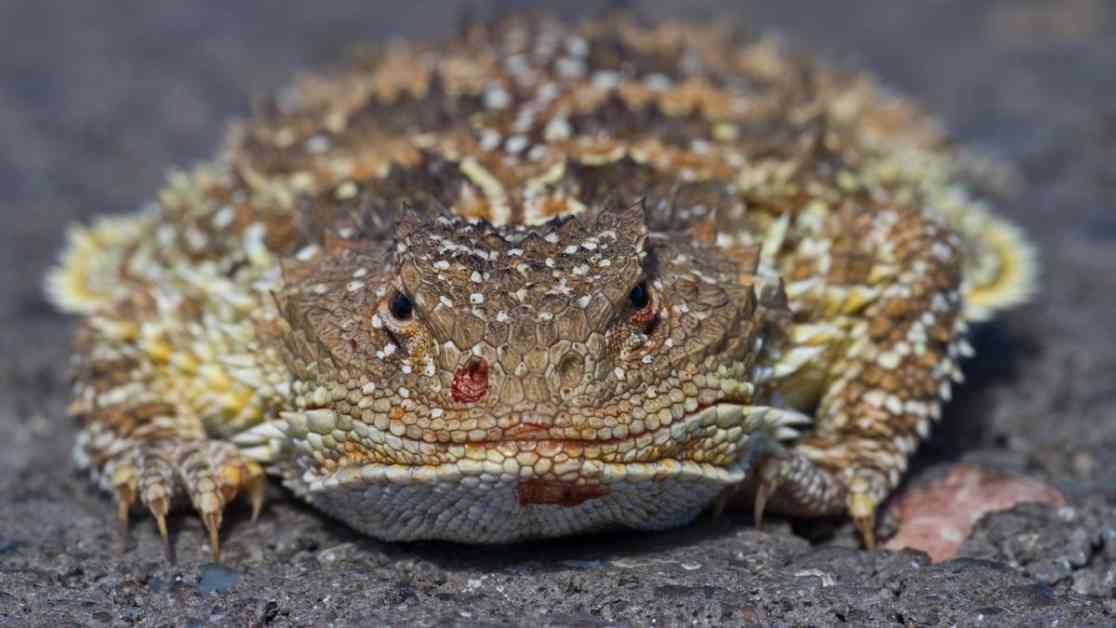The Greater short-horned lizard, also known as Phrynosoma hernandesi, is a fascinating creature found in North and Central America. These unique lizards have a distinctive appearance with a squat, flat shape and short snouts, earning them the nickname “horny toads” due to their resemblance to amphibians. However, what sets them apart is their extraordinary defense mechanism.
When threatened, Greater short-horned lizards have the ability to squirt a stream of blood from their eyes up to a distance of 5 feet (1.5 meters). This unusual behavior is a result of them restricting the blood flow leaving their heads, which increases blood pressure and causes tiny blood vessels to burst around their eyes. The purpose of this blood squirting is to confuse predators and give the lizards a chance to escape. It is estimated that these lizards may release up to a third of their total blood supply in this manner.
Although this tactic doesn’t deter birds, it does affect canines such as dogs, coyotes, and foxes, as they shake their heads to get rid of the blood. The blood of these lizards is laced with toxic chemicals, possibly acquired from the venomous harvester ants they consume. While their blood is not poisonous, it tastes unpleasant to predators. Interestingly, the lizards are immune to the venom of the harvester ants due to a chemical in their blood plasma that neutralizes it. Additionally, they produce large amounts of mucus to immobilize the insects, allowing them to safely consume them.
In addition to blood squirting, Greater short-horned lizards have other defense mechanisms. They are well-camouflaged with mottled skin and flat bodies, making them difficult to spot. Their bodies are covered in sharp spines, including two large head spikes, which they expose to predators by bowing their heads when attacked. Moreover, these lizards can inflate themselves to twice their normal size, not only appearing more intimidating but also causing predators attempting to swallow them to choke.
Overall, the Greater short-horned lizard is a remarkable creature with a range of unique adaptations for survival. From their blood-squirting defense mechanism to their immunity to ant venom, these lizards have evolved fascinating strategies to thrive in their environment. Their ability to adapt and protect themselves against predators makes them a truly remarkable species worth learning more about.










